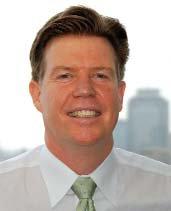Message from the Publisher
 Terrie Lloyd
Terrie Lloyd
An interesting new trend is emerging in the wealth management sector in Japan. Not only are there around 7 million baby boomers retiring on fat retirement bonuses between this year and 2010, bringing an estimated ¥40 trillion to ¥50 trillion in to the economy, but also after four bumper years of corporate profits on the back of soaring exports, there is a swathe of newly rich—directors, shareholders, traders, bankers, and professionals supplying high-end services— who are hitting the market as well.
According to statistics, in 2006 about 1.47 million households held more than ¥100 million in financial assets. While this represents only 2% of all households, the interesting thing is that about 40% of these households are the newly rich, I.e., first generation wealth, and of these about 30%–40% are company owners and professionals.
This bodes well for a concurrent boom in the wealth management business, where many domestic and foreign banks and securities firms are girding up to handle these newly rich, as well as the just “merely affluent.” According to the Nikkei, HSBC and Citibank, through its Nikko Cordial subsidiary, are going full tilt into the market. Apparently, HSBC intends to open up to six new specialty branches, called Premier Centers, to service the affluent and the first one will open in Hiroo in January 2008. Meanwhile, Citibank has said that it will double the number of its retail banking outlets to 64 branches and increase its brokerage outlets by about 25% to around 135 or so, by 2009.
So how rich is “rich” in Japan? According to Sumitomo Mitsui Financial Group (SMFG), their pre-2006 definition of adequate wealth for private banking was someone with assets of at least ¥2 billion (US$17.39 million). In the US, this would map onto the Very High Net Worth rank. The bank says that it has more than 1,000 customers in this category.
The next step down are the High Net Worth families who have assets of ¥500 million to ¥1.5 billion. Nomura Research estimates that there are about 52,000 households in Japan that meet this definition of wealth.
Then there are the “rich-but-not-necessarily-wealthy” families. Nomura Securities is going after this category and until last year set its cut-off for private banking at ¥200 million (US$1.7 million). We don’t have numbers, but imagine that somewhere between ¥100 million and ¥200 million in assets is the natural upper end for a retiring corporate manager with a normal savings and retirement plan—so a reasonable chunk of those 7 million baby boomers probably belong to this category.
At the bottom of the rich-list totem pole are the ‘Mass Affluent’ who, according to private banker HSBC Holdings, have at least ¥10 million (US$87,000) in financial assets. HSBC reckons there are about 6.3 million people in Tokyo and Osaka alone who fit this profile, and this is the demographic segment that they are now targeting with their new Premier Center facilities.
Meanwhile, here at J@pan Inc, we’re just happy to be able to pay our bills each month!

Terrie Lloyd
Publisher, J@pan Inc Magazine
Writer of Terrie’s Take
terrie@japaninc.com
J@pan Inc Magazine, Nov/Dec 2007





